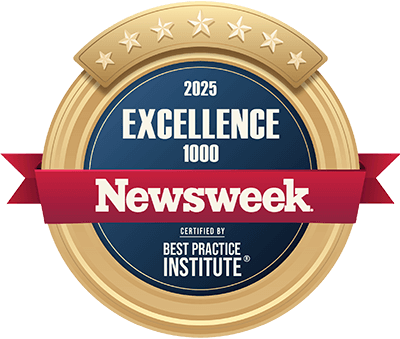MVP Development
Launch Plan, Skills, Costs
Learn about the MVP development process, typical project roles, and common MVP sourcing models from a company with decades of experience in MVP delivery. ScienceSoft also shares sample costs of outsourced MVP development.
Minimum Viable Product Development: The Essence
A minimum viable product (MVP) is the earliest shippable software version. Usually, it contains only the essential feature set and has just enough appeal to strike a chord with your target audience. The key goal of MVP development is to receive valuable input from users and start getting payback early on. Once an MVP is launched, it can be gradually upgraded with new features until it becomes a full-fledged app.
How to develop an MVP in 9 steps
- Analyze business needs.
- Define the core features.
- Design an MVP architecture.
- Choose a technology stack.
- Design MVP UX and UI.
- Build the MVP server side and APIs (back-end).
- Develop the client side of the MVP (front-end).
- Conduct testing and integration.
- Launch ready-to-use software.
Delivery time: from 2 weeks to 8 months, with the development stage taking from 2–5 days (for no-code/low-code development) to 6 months (for code-based development).
Costs: $40,000–300,000+, which can amount to 10–50% of the total software cost. Feel free to use our free cost calculator to estimate the cost for your case.
With 36 years in IT and over 4,200 successful projects, ScienceSoft builds high-quality MVPs to help companies promptly roll out key software features, test new initiatives, and get quick payback. We are ready to provide comprehensive consulting services at any stage of your MVP development project.
MVP vs. Prototype vs. PoC: What’s the Difference?
Proof of Concept (PoC)
A small project (in the form of a simple software demo, a hard-coded piece of tricky functionality, or just a document) that is aimed to prove that your idea is implementable in real life. UX/UI design is not the goal here – the main focus is on the tech side.
Target audience: a tech team, project owners.
Key purpose: To verify the tech feasibility of a project.
Prototype
An interactive representation of the future product design that demonstrates major user flows and software layout.
Target audience: project stakeholders.
Key purpose: To test the ‘look and feel’ of the app, refine the UX/UI before the actual coding.
MVP
A fully functional product that contains just enough functionality to be released to the market.
Target audience: end users.
Key purpose: To start gathering user feedback and gaining profits early on.
Prototype vs. MVP: What's the Difference?
A prototype is a visual presentation of a product idea, usually used to attract project funding and get early feedback from target users or project stakeholders. An MVP is a market-ready product with simplified functionality. Learn a full difference here.
How to Build a Minimum Viable Product
The number of MVP development steps and their duration will vary depending on the complexity and novelty of software and a type of a minimum viable product.
Below are described the typical steps we at ScienceSoft take to build an MVP.
Step 1. Discovery and MVP planning
(2 weeks – 1 month)
Business analysis (for products)
- Product idea generation.
- Target market, customer, and competitor research.
- Creating a product concept.
- Deciding on the monetization strategy.
- Planning a KPI dashboard for MVP.
Check a sample KPI set for MVP
Business analysis (for custom enterprise software)
- Identification of business needs and business process improvement options.
- Project stakeholder interviewing and analysis.
- Software idea conceptualization.
Feature road-mapping
- Feature outline for the full software version.
- Feature prioritization for the full software version based on user stories, user scenarios, prioritization techniques (e.g., Kano model, RICE method, impact-effort matrix), cost-benefit analysis, etc.
- Deciding on MVP functionality.
MVP architecture design
with attention to:
- High-level design of the final solution (if the MVP won’t be re-built in the future, but further improved in iterations).
- Performance requirements.
- Information security requirements.
- HIPAA, FDA, PCI DSS compliance (if needed).
Planning MVP integrations
with third-party systems (if needed).
Choosing a technology stack
for the optimum MVP development time, costs, efforts, and software reliability. If the MVP is to be further improved in iterations, we also keep the full software version in mind while choosing techs.
Step 2 (optional). Proof-of-Concept and Rapid Prototyping
(~2 months)
We recommend opting for a PoC and/or prototypes in case you need to demonstrate the software concept in a sales context, show how the software will work to your stakeholders, or check the technical feasibility of a highly innovative idea.
Step 3. MVP Development Project Planning
During this stage, our team outlines:
- Project scope.
- Project deliverables.
- Project budget.
- The PM methodology (most often, one of the Agile options, e.g., Scrum, extreme programming).
- Project timeline.
- Project schedule and breakdown into iterations and deliverables.
- Project risks charter.
Step 4. MVP Development
No-code MVP development (best for a startup MVP or an ambitious SaaS MVP)
(~1-2 days)
Sometimes you can test the demand for a new product or an app’s ability to meet business requirements without actual coding and with minimum possible investments. For this, ScienceSoft uses such MVP types as:
- A ‘landing page’ MVP (for products) is the presentation of a coming-soon product on the landing page. Usually, this takes the form of a text or video, wireframes or live prototypes. Such an MVP introduces your idea to a target audience and helps evaluate the demand via requests or sign-up forms. It also helps analyze the interest in the features and prioritize the app development accordingly.
- A ‘flintstone’ MVP – advertising new software and showcasing the process automation it will be capable of, while temporarily handling the processes manually.
If a no-code MVP turns out to be successful, we at ScienceSoft immediately plan a code-based MVP not to get overwhelmed with the processes executed manually (a ‘flintstone’ MVP case) and ensure that our clients are ahead of the competition.
Code-based MVP development
Two most demanded code-based MVP types:
- Single-feature MVP – implementing one key feature of future software that creates the core value.
- 'Piecemeal' MVP – creating a product/a custom application version comprising its basic features out of ready-made elements (created by you in the previous projects or available open source). Later, you are likely to update or replace the reused parts.
The development of a software-based MVP with ScienceSoft usually involves the following stages:
1
MVP UX design
(2-5 days)
Working out user personas and user journeys to make sure that future users can easily find their way around the app and quickly fulfill their tasks.
2
MVP UI design
(2-5 days)
Creating custom design of user-facing parts (buttons, menus, tabs).
Best practice: We include this stage only if the design is meant to be a competitive advantage of your app. Otherwise, we use default themes and focus on the MVP functionality to reduce the development costs and shorten the time to market.
3
MVP coding
(2-6 months)
- Back-end development to build the MVP server side and APIs.
Best practice: At ScienceSoft, we actively use many ready-to-use cloud components and services, mostly from AWS and Azure, to minimize MVP development effort and cost and streamline the delivery.
- Front-end development to transform static interface images provided by UI designers into a fully functional MVP client side, and ensure its communication with the server.
- Testing that runs in parallel with development.
As a result of this phase, ScienceSoft delivers a working MVP and supporting documentation.
Step 5. MVP Launch and Further Iterations
We deploy ready-to-use software to the production environment. In case of complex MVPs, we first move them through testing and staging environments so that the team can safely introduce the final changes or catch the remaining stealthy issues, if any, before the release.
After the release, ScienceSoft monitors how users communicate with the MVP. We:
- Validate or redefine user stories.
- Identify arising risks and update a risk management plan.
- Adjust feature(s).
When we see that the MVP gets market validation or shows positive changes in business processes, we either further evolve it or build new software from scratch to cater to the needs and expectations of a growing number of users.
Key Sourcing Models for MVP Development
In-house MVP development
- Direct supervision over the development process and team productivity.
- No quick access to specific competencies.
- All managerial efforts are on your side.
Partial outsourcing of MVP development
- Optimal resource usage.
- Quick project start.
- Concerns for project team coordination, the speed of MVP delivery and the quality of results are on your side.
Outsourced MVP development
- A fully managed team of experts that takes complete responsibility for the project.
- Established best practices for MVP design and implementation.
- A quick project start.
- Risks of choosing an inept vendor.
ScienceSoft as an MVP Development Partner: Mature, Value-Driven, Passionate
- 36 years in IT, 13 years in SaaS MVP development.
- 4,200+ IT projects completed.
- Trusted by global brands such as Deloitte, IBM, Walmart, eBay, Nestle, NASA JPL, Viber, and more.
- Hands-on experience in 30+ industries, including healthcare, BFSI, ecommerce, retail, manufacturing, education, telecoms, and more.
- Fast project launch (2–14 days), strong Agile and DevOps cultures, strict adherence to SLAs.
-
Quality-first approach based on a mature ISO 9001-certified quality management system.
-
ISO 27001-certified security management based on comprehensive policies and processes, advanced security technology, and skilled professionals.
Our awards, certifications, and partnerships
Build the Right MVP with ScienceSoft
There are around 4,200 success stories in our portfolio, and each of them once started with an idea. Come to us with a concept, and we will help you turn it into a working app that is loved by its users.
Benefits of MVP Development with ScienceSoft
Cost-effectiveness
You avoid excessive investments at the start and stay flexible in the future.
Market testing
You get an opportunity to enter the real market and check the viability of your concept.
Faster time to market
Code-based MVP will be ready for users in ~ 2-6 months, which allows you to roll out your product fast and stay ahead of the competition.
Early feedback
Early user feedback will help you zoom in on necessary product improvements.
Quick idea monetization
The income from MVP can become a solid base for product evolution. Besides, it’s a chance to be noticed by investors.
Access to advanced techs
We can enrich your MVP with AI, VR, data science, blockchain, IoT, and more.
Typical Roles in Our MVP Development Teams
Project Manager
– oversees an MVP project, including delivery on time and on budget, preventing feature creep, etc.
Business Analyst (BA)
– elicits functional and non-functional MVP requirements, technical limitations, defines MVP modules and integrations with other systems.
UX Designer
– performs UX research, designs minimum necessary user interactions with an MVP, and information architecture, conducts usability testing.
UI Designer
– working closely with UX designers, creates aesthetically pleasing, custom visual style of the user-facing MVP interface.
Back-end developers (1-3)
– builds the MVP server side and APIs.
Front-end developer
– creates the MVP client side.
Quality Assurance Engineer (optional)
– designs and implements the test strategy, plans and cases, validates the developed MVP and produces test summary reports.
Additional talents can be required, depending on the nature of the project, for example, we can also involve data scientists, 3D designers, etc.
MVP Development Costs
Custom MVP software development may cost anywhere between $40,000 and $300,000+, making up 10–50% of the total development cost. Depending on software type and complexity, MVP investments can vary as follows:
$40,000-120,000*
For a mobile MVP.
$80,000-160,000*
For a web portal MVP.
$120,000-300,000*
For a SaaS MVP.
*The estimates provided are not ScienceSoft's official pricing for minimum viable product development services. We estimate the cost of each project individually, based on our clients' specific situations and needs.
The grand total for MVP development depends on a multitude of factors. At ScienceSoft, we consider the most significant cost factors to be:
- Application type (web, mobile, desktop); number of platforms supported (for mobile).
- Number and complexity of features.
- Uniqueness and complexity of design.
- Number and complexity of integrations with third-party systems (e.g., ERP, accounting software, DMS; one-way or two-way integration).
- MVP performance, availability, security, latent capacity and scalability requirements.
- Necessity to maintain existing data (for custom enterprise software MVP in case of migration).
How Much Will It Cost to Develop Your MVP?
Please answer a few questions about your needs to help our consultants estimate the cost of your MVP faster.
Thank you for your request!
We will analyze your case and get back to you within a business day to share a ballpark estimate.
In the meantime, would you like to learn more about ScienceSoft?
- Project success no matter what: learn how we make good on our mission.
- 4,200+ successful projects: explore our portfolio.
- 1,400+ incredible clients: read what they say.

About ScienceSoft
ScienceSoft is an ISO 9001- and ISO 27001-certified global IT consulting and software development company headquartered in McKinney, Texas. Achieving project goals in spite of time and budget constraints, as well as changing requirements, is ScienceSoft's top priority. You set goals, we drive the project to fulfill them.
With a strong focus on quality and in-depth knowledge of advanced techs, we build robust MVPs for promising startups and successful enterprises. Reach out to our team for expert consultancy or end-to-end MVP development services.














